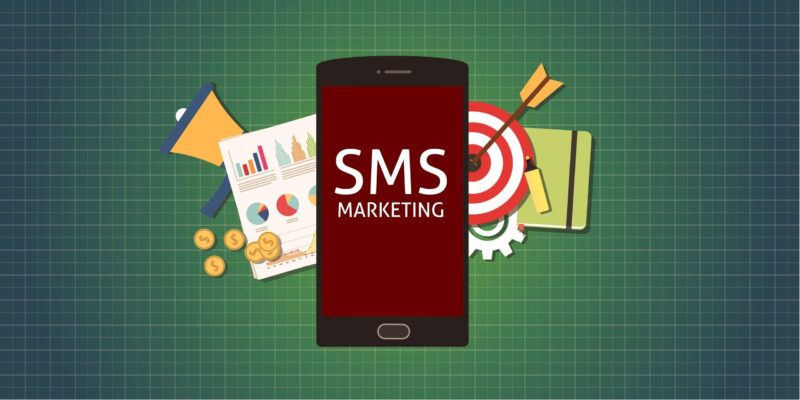What if you could reach nearly every customer you target—instantly?
That is not an exaggeration. That is the consistent reality of direct mobile communication. As promotional emails pile up and social platforms block organic reach, only one channel cuts through with consistency: text. In 2025, open percentages for mobile messages remain at a staggering 98%.
No other format—print, digital, or paid media—comes close. Customers still engage with their mobile inboxes daily, often within minutes of receiving new messages. That kind of attention is no longer optional—it is a competitive edge.
The smart brands are the ones that are leaning into it, moving budget away from flashy campaigns and into strategies that deliver immediate visibility and action.
Key Points:
- Text campaigns still dominate with near-perfect open stats.
- Small shops can outmaneuver big brands using leaner tools.
- Fast delivery and response time drive higher conversions.
- Lower cost, higher yield makes it ideal for tight budgets.
- Urgency, exclusivity, and timing win attention instantly.
Inbox Clutter Kills. Text Still Cuts Through

Every email inbox has become a dumping ground. Users swipe, delete, or simply ignore messages the second they arrive. Most promotional content sits unread, buried behind newsletters, receipts, and spam. Ads on social platforms suffer similar fates. Algorithms determine who sees what, and your post competes with memes, celebrity gossip, and friend updates. Getting noticed has never been harder—unless you use mobile.
Mobile messages still receive attention because they appear beside personal chats. Notifications pop up immediately. Users look because they expect urgency. That placement gives small businesses a direct and powerful edge. Without relying on algorithms or competing with distractions, you reach the customer where it matters—on their personal device. And when your message gets seen, it has the chance to convert.
Why 98% Still Matters in 2025
There is one stat that defines effectiveness before anything else—open rates. No matter how brilliant your offer, layout, or discount, none of it matters if the customer never sees your message. That is where text delivers with unmatched consistency. The 98% figure is not an inflated average. It reflects the habit-driven nature of how users treat their phones. They look. They check. They read.
Email averages have dropped even lower, hovering around 18%, and social media remains unpredictable. Paid ads drain the budget and deliver impressions instead of action. Mobile messaging bypasses the noise and gives you a direct line to attention. That attention leads to interaction, and interaction drives revenue. In 2025, where time is short and competition is endless, that number is everything.
The New Secret Weapon
Modern mass texting software has shifted the game entirely. Small businesses no longer need giant ad teams or expensive tools to scale their message. Now, with one click, you can reach thousands—immediately and reliably. Platforms offer ready-to-go templates, real-time metrics, and simple tools to stay compliant.
What sets the best tools apart:
- Full compliance with industry standards
- Built-in automation to handle campaigns
- Two-way communication channels for engagement
- Fast setup and intuitive dashboards
You can personalize by name, location, or behavior. You can test message variations instantly. And best of all, you can watch results in real-time, adapting based on response. This is not just about volume—it is about precision and speed at scale. That is where your leverage lies.
Retail Wins Faster With Text

Speed decides who wins in retail. Buyers today move quickly, with short attention spans and high expectations. If your message does not arrive at the right moment, it misses entirely. Text messages help brands stay one step ahead by delivering updates, alerts, and deals directly into the customer’s daily flow.
Most successful retail campaigns use mobile alerts to:
- Notify subscribers of flash deals
- Send early access to loyal buyers
- Alert shoppers about restocks or last-chance sales
These campaigns aren’t scattered. They are focused. By timing outreach to shopping behavior and preferences, stores increase not just clicks but conversions. That immediacy gives local brands a way to drive revenue without depending on expensive ads or slow-moving email lists. Mobile wins because it reaches the right person at the right time.
Timing Is Everything
It is not enough to send a good message. You need to send it at the right moment. Text platforms give marketers precise control over delivery time. You do not wait for inbox openings. You choose the window, and the message lands on schedule. That level of control changes the game.
Text can arrive when the lunch crowd checks their phones or just as people leave work. Some businesses trigger messages based on weather changes, traffic conditions, or browsing history. Timing drives relevance, and relevance drives action. Without that link, messages feel random or even annoying. With proper timing, they feel helpful. The best campaigns treat timing not as a detail, but as a core part of their strategy.
Why Customers Respond Faster

Messages that show up in a mobile inbox feel personal. That is why people respond to them with more urgency than emails or ads. Mobile gets lumped in with friend chats, family updates, and urgent notes. The context is different. Your brand becomes part of their daily rhythm.
That familiarity increases trust. But trust must be earned. The copy must be sharp. The offer must be real. Your messages should:
- Use action verbs that push decision-making
- Include short links with direct benefits
- Feel like they were written for one person, not a crowd
When you nail tone and clarity, people don’t just read—they tap, act, and buy. That’s where response becomes revenue.
5 SMS Strategies That Convert in 2025
- Segment by behavior
Tailor your campaigns based on how people shop. A frequent buyer needs a loyalty offer. A casual browser needs something lighter and timed better. - Trigger by activity
Set messages based on abandoned carts, check-ins, or clicks. Automated triggers drive action without effort. - Use countdowns
Short-term urgency works. Countdown offers create a visible deadline that drives immediate decision-making. - Ask and engage
Make some messages two-way. Ask a question. Offer a choice. Engagement builds memory. - Review data weekly
Your tool gives feedback in real-time. Use it. Adjust messages. Refine strategy.
Compliance Can Make or Break You
Getting mobile outreach wrong leads to more than poor performance—it leads to legal trouble. Regulations around messaging continue to evolve. You need to stay ahead. Opt-in isn’t optional. Timing rules exist for a reason. Every message must follow specific compliance standards to avoid penalties.
Top things to avoid:
- Skipping opt-in or burying it in fine print
- Sending messages during restricted time windows
- Using misleading offers or bait tactics
Good software simplifies this. It includes automated opt-out links, time filters, and rule enforcement. Don’t ignore compliance. It protects your business and preserves customer trust. The brands that last are the ones that respect both legal limits and audience patience.
How Small Brands Outperform Giants

Big brands take weeks to approve a campaign. They cycle through departments, approvals, legal reviews, and alignment checks. Small businesses skip the bureaucracy. They test, learn, and launch in real-time. That speed alone becomes a weapon.
You don’t need an ad agency. You need:
- One good tool
- One sharp offer
- One fast feedback loop
You can build, send, and adapt in less time than it takes a big competitor to draft a brief. That edge means faster learning, higher accuracy, and more direct results. Mobile outreach favors the agile. If you move quickly and adjust with insight, you can outsell brands with ten times the budget.
Case Snapshot: Local Boutique Tripled Revenue
A local clothing boutique in Phoenix faced the same problem every small retailer faces—ad costs were high, results were flat, and engagement on social platforms kept dropping. They decided to test direct messaging. Instead of posting endlessly or boosting paid content, they focused on three clear moves.
First, they offered early access to weekend deals through text. Next, they segmented messages based on previous purchases. Lastly, they limited messages to key shopping windows—Friday afternoons and Saturday mornings. Within two months, revenue on key days had tripled. Redemption rates rose. Opt-outs stayed low. They didn’t outspend the competition. They outpaced it with speed and precision.
Why SMS Beats Email, Again and Again

Email still plays a role in longer campaigns, receipts, or educational material. But for immediate action, it falls short. Customers ignore inboxes. They turn off notifications.
Spam filters hide your message. Even when seen, email often feels passive.
Mobile messages break that barrier. They show up with presence. They demand action. No filter blocks them. No algorithm limits them. Your message gets seen, often within minutes. And if your copy is strong, action follows. It is not just the format—it is the clarity, timing, and access that make it better. That is why mobile remains the best weapon in 2025.
Final Words
Your budget might not match that of a big brand. But your focus can. When you focus on reach, timing, and precision, you win. Mobile lets you speak directly. It skips the layers. It hits the moment.
You don’t need more impressions. You need more actions. A well-timed message with a clear offer outperforms bloated ad campaigns every time. Keep your communication lean, sharp, and focused. That’s how small businesses win in 2025.








